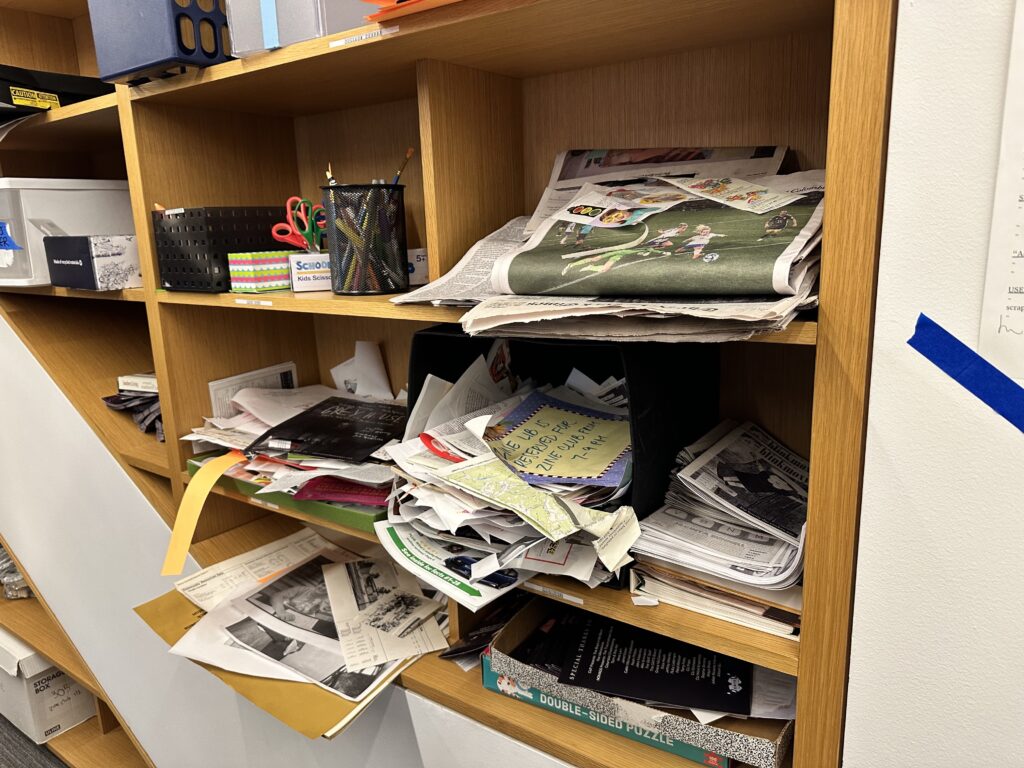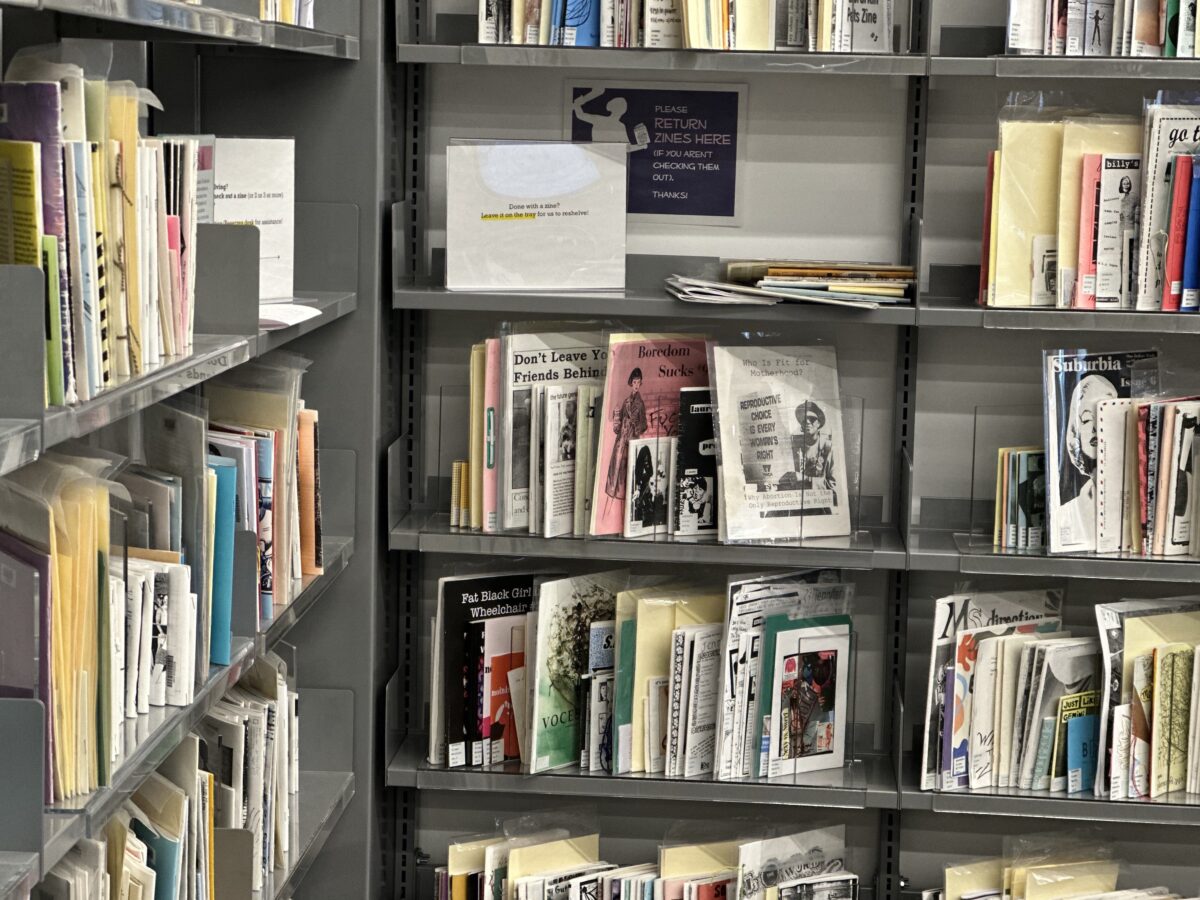This librarian has read thousands of these—yet they are neither books nor essays.
Jenna Freedman, Barnard Zine Library Director, refers to the nook on the second floor of Milstein as a “specialty bodega.” For the past 20 years, she has tended to these handcrafted pages bursting with stories, collages, mind dumps, and lists on everything from political activism, punk cultures, to teenage girlhood. “A Renegade’s Handbook to Love and Sabotage,” “Greenwoman,” “Indulgence Series,” “Women of the Negritude”—these are only a peek into the microcosm of the Zine Library.
One of the largest collections in academia, the library houses over 2,000 small-circulation, self-published magazines largely by women, people of color, gender-nonconforming people, and marginalized communities. Zines, originating from the 1930s and 40s, draw from a “do-it-yourself” philosophy, disregarding traditional conventions of professional design, publishing houses, and mainstream media. Through self-publishing, marginalized authors gain the power to control publishing processes.
To Freedman, zines capture culture in a way the commodified world of mainstream media does not, proposing self-aware and “alternative pedagogies.”
“They put voices and perspectives on the shelf that are by people who don’t have a PhD, people who are not professional journalists,” Freedman said. “There’s so much gatekeeping between having expertise and writing and publishing a book. Zines bypass all that.”
This institutional disconnect and intimacy of zines’ stitched-together pages is what drives Inica Kotasthane ’26 to create them. Kotasthane co-leads the Barnard Zine Collective (BZC) with Shira Michaeli ’24 and Rishika Gupta ’26. Started in 2010, the collective remains independent from the college.
“Zines, historically and artistically, are subversive and purposely go against institutional standards upheld by other forms of publications,” Kotasthane said. “By distancing yourself from an institution, you’re giving yourself control over your work and the liberty of not having a larger power loom over you.”

For Kotasthane, creating zines in the second-floor nook grants her a sense of fulfillment. “Zines exist outside of all the structures on campus,” Kostasthane said. “I’m making them only for the sake of creating and for myself… [and] so few things accomplish that.”
Michaeli agreed, finding comfort in zines’ lack of censorship and methodology.
“The world is so curated,” Michaeli said. “I’m not a neat artist. I’m not a patient artist. Suddenly, there’s this space where I don’t have to be curated in that way.”
Students have the opportunity to put their own collections on the shelf, such as senior Nayla Delgado’s “Hispanic Heritage Zines.” Curated in 2022, this collection of zines honors Hispanic culture and the influence of Hispanic Americans.
“In the same way that zines cannot be defined in a singular way, ‘Latino’ and ‘Hispanic’ are not the definitive terms they are presented to be,” Delgado said in a Student Shares essay published in Barnard College News. “None of the Hispanic heritage collection zines convey a singular, monolithic experience. Instead, they include different voices, and their nuances offer us a better understanding of what the Hispanic or Latinx cultural experience is.”
Also a Zine Library Student Assistant, Delgado translated abstracts into Spanish for zines in the heritage collection and wrote summaries for the library’s Spanish-language zines.
“My translations enabled interested students and researchers to find themselves in the same language of the zine—the intended language,” she shared.
Delgado emphasized the “platform of possibility” zines present in academia, which has consistently marginalized voices.
“I’ve found a great sense of joy in seeing how my work has been integrated into the classroom, with zines functioning as source texts,” she said, recalling how Spanish II courses used the Hispanic Heritage Zines to discuss the role of language in identity and belonging.
For Freedman, the increased pedagogical use of zines was “an overnight success that took 10 years to build.”
“For 10 to 15 years, I was like, ‘how do I make this happen?’” Freedman recalled, still hoping to grow this cycle of creating and teaching through zines.
“On a pedagogical level, people are still discovering how rich a body of material and data is provided in zines,” she said. “I still am blown away by that. I hope others will have those experiences too.”

